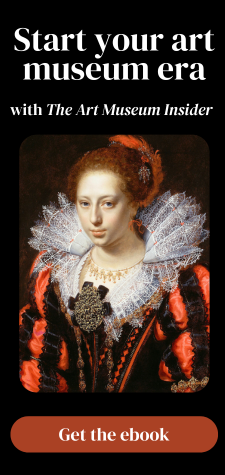“Portrait of Artemisia Gentileschi as Saint Catherine” or “Self-portrait”?
Guest post by Kali Schliewenz, Art History student, University of Cologne
The Curious Case of Maddalena Corvina’s Saint Catherine of Alexandria
While visiting the exhibition Maestras: Women Painters 1500–1800, recently on display in the Arp Museum in Germany, I stumbled upon a fascinating work of art (Fig. 1).
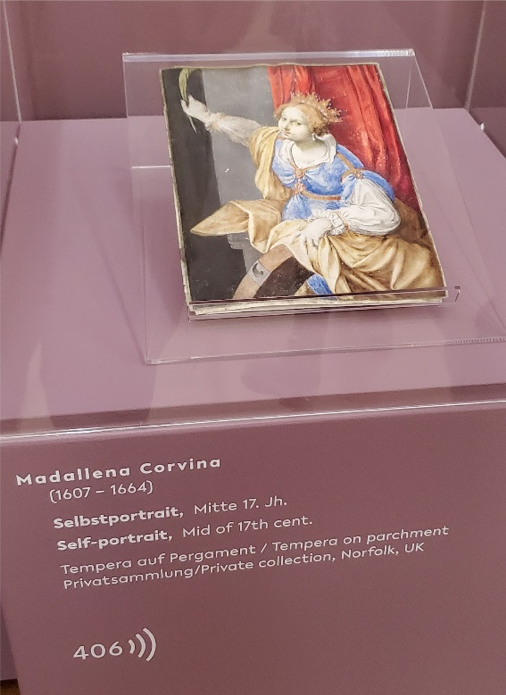
A small, 24.5 x 18 cm tempera on parchment painting shows the half body of Saint Catherine of Alexandria. Her outstretched right arm is holding a martyr’s palm, and her left hand is resting on her martyr’s attribute, the wheel (Fig. 2). The exhibition titled the piece simply Self-Portrait (Selbstporträt). The artist is the Italian miniaturist and illuminator Maddalena Corvina (1607–1664).
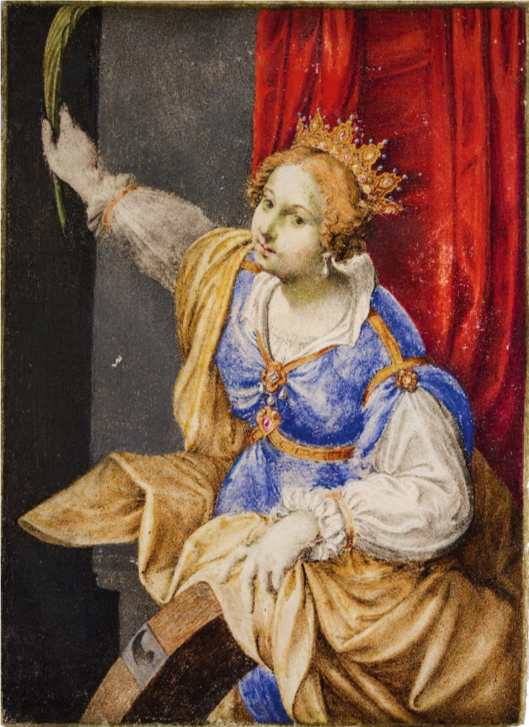
The title made me curious, though. While on sale at the Wannenes auction house in Genoa in December of 2019 (about four years earlier), the art historian Elena De Laurentiis identified the same painting as a Portrait of Artemisia Gentileschi as Saint Catherine (Ritratto di Artemisia Gentileschi in veste di Santa Catarina). Wannenes estimated the picture at around €2,000–3,000, making it one of the more expensive objects on sale. Other paintings in the auction were priced at only around a few hundred to a few thousand Euros.
At first glance, the depicted Saint Catherine shows no clear reference to the person of either Maddalena or Artemisia. This post will examine the question of whether either label is justified.
“Maddalena Corvina Pittrice et Miniatrice Romana” (1607–1664)
But first, who was Maddalena Corvina and what was her connection to Artemisia Gentileschi?
Maddalena Corvina was born into a family of artists and scientists in 1607 and lived and worked in Rome. Her relatives on her mother’s side, such as Francesco Castelli (Frans van De Casteele) and Pietro Castelli, enjoyed close connections to the Italian art scene. And even her mother Catarina Castelli was closely linked to some of its members. Records show that she appointed Cassiano dal Pozzo as the executor of her will. These connections could only have benefitted Maddalena, as she would find herself under the patronage of important protectors like the Medici and Barberini families, as well as Cassiano dal Pozzo. These patrons employed and supported several women artists at the time, such as Anna Maria Vaiani and Plautilla Bricci.
In 1636 Claude Mellan framed her etched portrait with the words “MADDALENA CORVINA PITTRICE ET MINIATRICE ROMANA” (“Maddalena Corvina, Roman Painter and Miniaturist”) (Fig. 3), proving her status among her fellow artists.

Patrons commissioned from her small-scale paintings and drawings. Pope Urban VIII Barberini famously commissioned her to illustrate a liturgical manuscript, the Sistine Sacristy. Between 1651 and 1655 she became a member of the Accademia di San Luca in Rome. Furthermore, records of her mother’s expenses indicate that Maddalena enjoyed considerable financial success with her work.
However, the catalog of extant works attributed to the artist is quite small: a miniature Madonna with Child roughly dated around 1640 and located in the Uffizi collection, two portraits, one of a Young Noble Man (Fig. 4) and the portrait of a Lady of High Standing (see Fig. 10 below) are currently in the hands of private collectors. Additionally, the Bodleian Library in Oxford owns a fragmented folio. Elena De Laurentiis mentions references to a much larger corpus of now lost works by the artist in her publication on the Illuminators of Urban VIII.
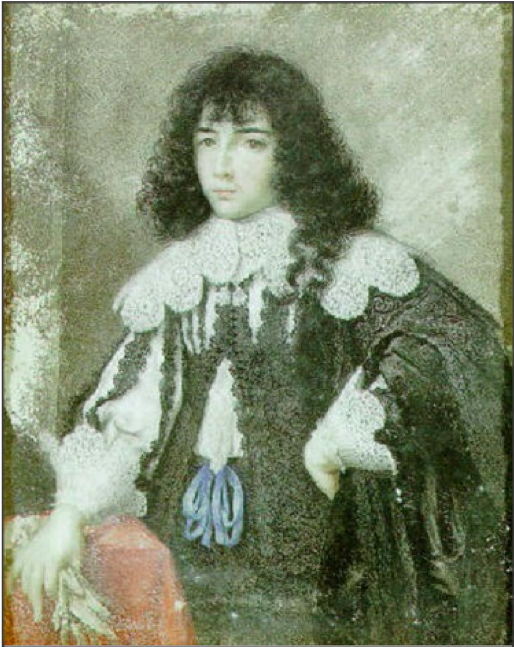
“Self-Portrait as…”
With her background information in mind, I now want to return to the Saint Catherine painting. In Mary Garrard’s 1980 article on Artemisia Gentileschi’s La Pittura or Self-portrait as the Allegory of Painting (Fig. 5), she proposes the idea of a gender-specific type of women artists’ self-portraiture in seventeenth-century Italy.

In Gentileschi’s picture, the feminine body of the artist assumes the costume of the personification of Pittura herself. Cesare Ripa’s Iconologia provides the iconographical template (Fig. 6). There is no doubt that Gentileschi’s picture fulfills the requirements of a confident, self-representational portrait. The picture’s intellectual intricacies and skillful execution point to a close study of Ripa’s text and the intention to apply La Pittura’s attributes to the artist herself.
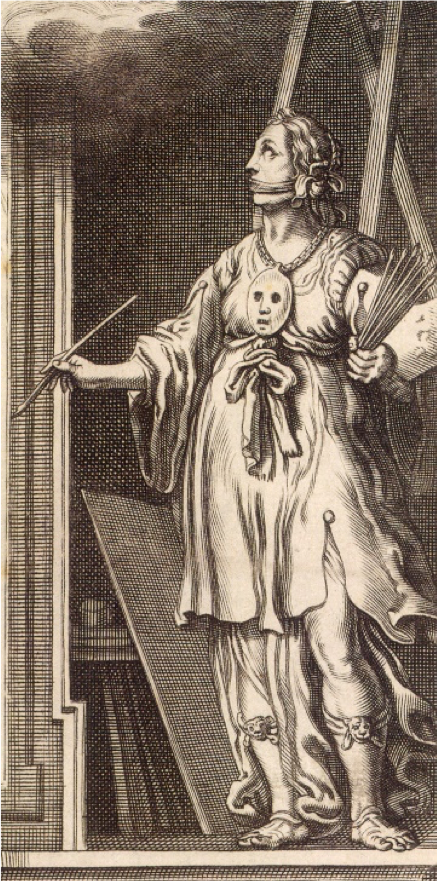
Garrard further argues that male artists had to contend with a clumsy combination of formal attire and attributes of manual labour to communicate their profession and their desired social status. Women artists, on the other hand, could adopt the gendered body of the personified allegory. This allowed women like Artemisia to blur the lines between the conventional self-portrait at the easel and the allegorical approach to the subject without sacrificing their rich garments for work wear. On one hand, they could showcase their knowledge of theoretical art writing, such as Cesare Ripa’s Iconologia. At the same time, we can understand this as a strategy of legitimizing their profession. Following Garrard, women artists were able to assume the very attributes of the personified Pittura for themselves using the tools of their craft.
Garrard’s idea of applying the reading of a “costumed self-portrait” to female-bodied subjects seems incredibly compelling. The title addendum “Self-portrait as…” now graces a good portion of Artemisia’s depiction of female subjects. Examples include the Saint Catherine in London (Fig. 7) or the Lute Player in the Villa Medici.
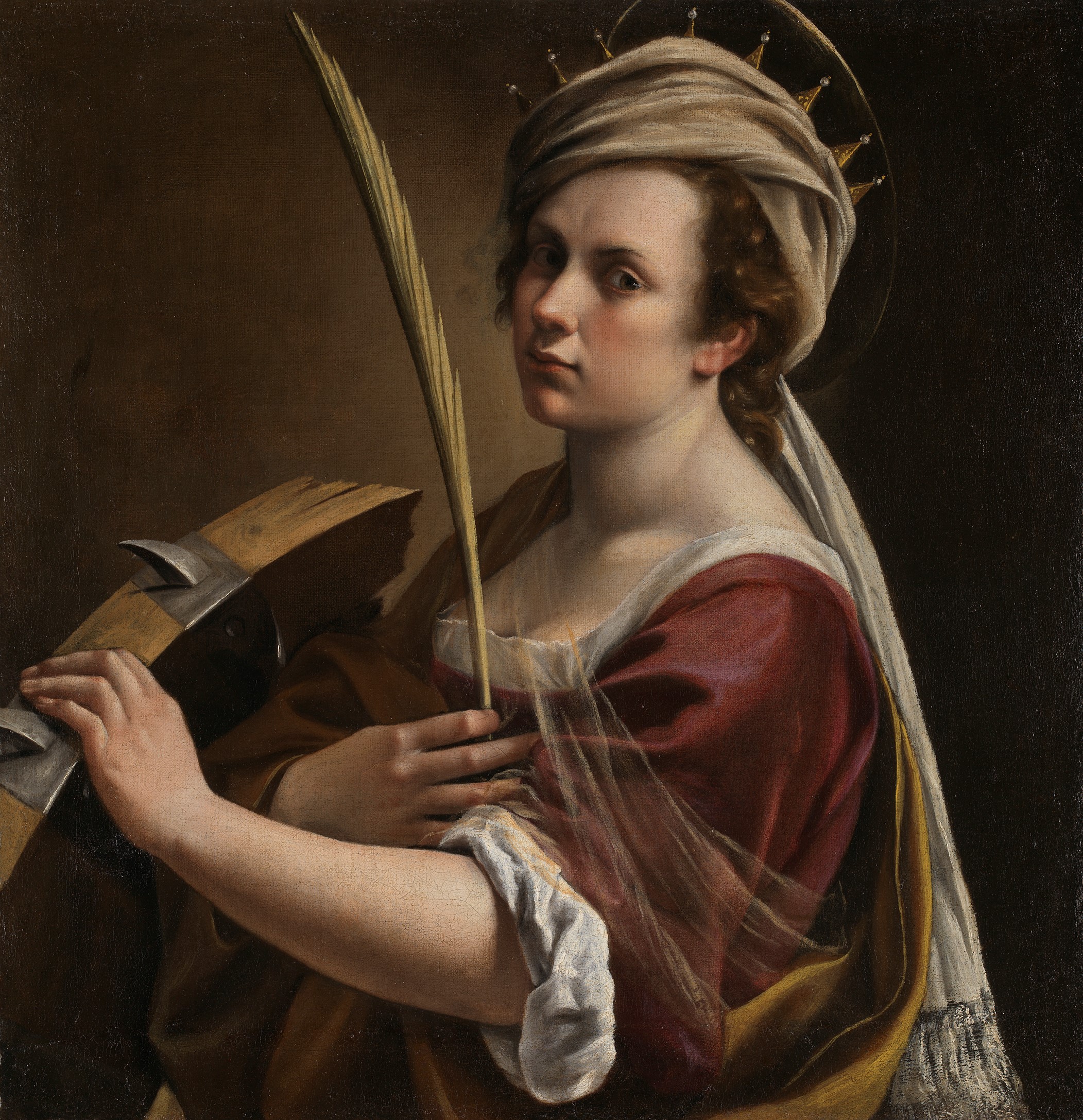
The search for (hidden) self-portraits in the works of women artists of the early modern period has become a popular trend. But are these attributions justified? And is it possible to apply this reading to Corvina’s picture?
Maddalena, Artemisia and the patrons of Rome
Elena De Laurentiis likely based her identification of Maddalena’s Saint Catherine “as a portrait of Artemisia Gentileschi” on the following aspects:
First, there are compositional similarities between Artemisia’s Allegory of Painting and Maddalena’s martyr. Both figures lean across the canvas with their body curved and their face in slight profile. Their right arms are extended towards the upper left corner of the painting, while either subject’s left arm is bent, to hold a painter’s palette or to rest on the martyr’s wheel, respectively. The similarities in composition are clear, but not quite so easy to explain. Since Artemisia likely worked on her Allegory during her time in England, Maddalena could have only known about the piece from descriptions or reproductions. None such have—to my knowledge—survived.
However, one can find in Maddalena’s Saint Catherine similarities to another picture, as well. It is most notable in the saint’s clothing: the blue dress, bright white undergarment and golden-yellow drapery around the shoulders and body of the subject call to mind the Allegory of Painting with a Portrait (Fig. 8), which is often attributed to Artemisia. The artist dressed their Pittura in the same colourful garments. Additionally, they have placed an almost identical jewel-studded gold brooch at the centre of the subject’s neckline. This argument seems to me a weak one. It is plausible that either artist has simply reproduced the popular styles of seicento Italy in dressing their subject.
A second argument poses a possible connection between the two artists by looking at their shared patrons. Artemisia, like Maddalena, enjoyed the patronage of Cassiano dal Pozzo, for whose collection she wished to paint a self-portrait. Although, scholarship is divided on whether the picture she mentions in her letters can be identified as either the Allegory of Painting with a Portrait or the Pittura. It is entirely plausible to assume that Maddalena would have known Artemisia—or at least would have been familiar with her work.

Maddalena Corvina might have seen Artemisia’s works (or reproductions). She could possibly have taken inspiration from them, whether on purpose or unintentionally. However, I don’t see any substantial reason to assume that it was Maddalena’s goal to portray Artemisia Gentileschi personally, as Susanna Blöcker and Elena De Laurentiis suggest. First, because self-portraiture by women artists at the time tended to either highlight their profession as artists or their social status. Secondly, the reading of Artemisia in the role of a martyr, as is popular in contemporary feminist readings, seems to me an anachronistic one in this particular discussion.
Furthermore, I want to highlight that several artists, such as Artemisia herself, have reused or repurposed compositions without aiming to create an intentional reference to another picture. I believe that this is the case here, as well. To avoid the easy over-interpretation of the picture, I have chosen to refer to the painting simply as a Saint Catherine.
“Selbstporträt” / “Self-portrait”?
The question of a self-portrait, as the exhibition label at the Arp Museum proposes, remains. The wish to find “hidden” portraits of artists in their work has long been overstressed in art historical discourse. As I have shown, this is even more prominent when it comes to women within the profession. This is not to say that women artists did not create costumed self-portraits for various reasons. As I have argued above, I believe that, as Garrard suggests, we can and should read Artemisia Gentileschi’s Allegory of Painting as such. It depicts the artist in elegant costume, deeply immersed in her work. In this way she successfully communicates her status and perception of herself as an artist.
However, there may be other reasons as to why female subjects by women artists are disproportionally often identified as “self-portraits.” In many cases societal expectations excluded women artists from anatomical studies. They did not necessarily have access to life models for large-scale historical compositions and instead created portraits and still life paintings. From this, I conclude that the artists probably often depended on their own mirror images for more complex compositions. They may have used their own bodies and faces as references for their work. Art dealer Katrin Bellinger, for example, posits that Mary Beale (1633–1699) used casts of her own arms as a model for her Self-portrait as Artemisia II of Caria (Fig. 9) and thus “put herself into the picture.”
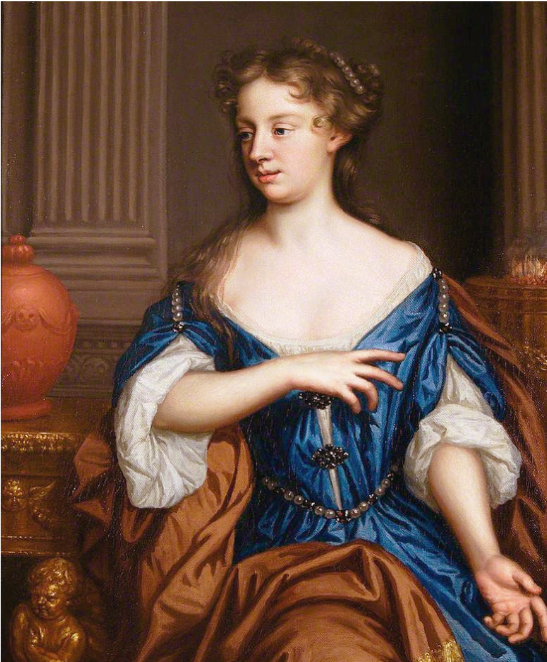
We might find similarities in the physical attributes of more reliable (self-)portraits and female-bodied subjects. However, this should not immediately indicate that it was always the artists’ intention to also claim the metatextual attributes of the painted subject for themselves. The goal of the “self-portrait” is to convey the character as well as the physical attributes of its subject. Maddalena’s Saint Catherine makes no reference to either her work or person. Neither do the facial attributes show similarities to Claude Mellan’s portrait of the artist. Based on the available sources, it would therefore be a stretch to call Maddalena’s Saint Catherine a self-portrait.
Contemporary perception and modern reception of Maddalena Corvina’s work
Regardless of what we call her depiction of Saint Catherine, it is important that Maddalena Corvina’s work was on display at the Maestras exhibition.
Seicento patrons and fellow artists alike held Maddalena in high esteem for her craft. In a letter from 1659, Carlo Antonio dal Pozzo counts her among his brother Cassiano dal Pozzo’s favourite (amorevoli) illuminators. Two years after her death in 1664, the artist Abraham Bruegel mourns her passing and the loss of her talent. In a letter to Prince Ruffo, he claims that no other contemporary illuminator lives up to her skills.
And although Maddalena fell into oblivion in subsequent centuries, in recent years interest in the artist has increased on the contemporary art market. In 2019 the creatively titled Saint Catherine was estimated at a value of €2,000–3,000 in Genova. According to the Artnet database it was auctioned off for €12,260. Only a few years later at the TEFAF Maastricht in March 2023, as Sarah Cascone reported for Artnet News, the dealer of Maddalena’s Portrait of a Lady of High Standing (Fig.10) valued that painting at €100,000–150,000. It sold immediately.
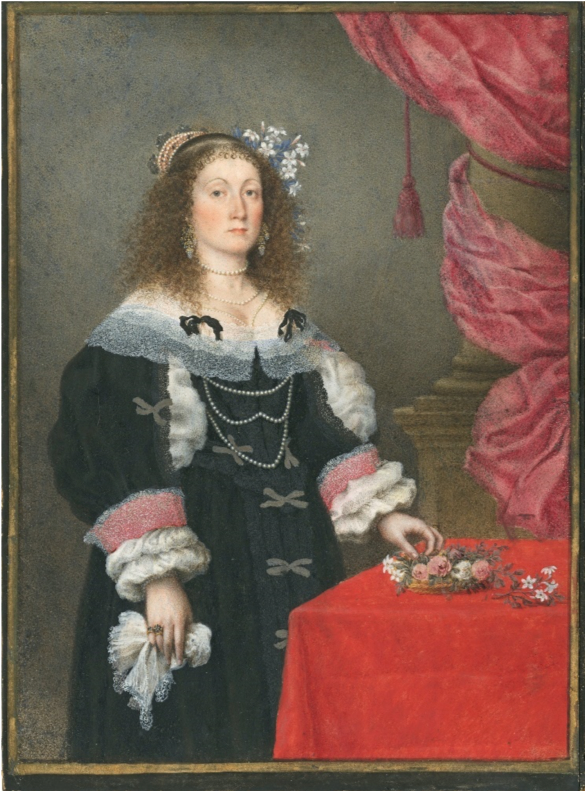
The inclusion of Maddalena Corvina among prominent women artists such as Lavinia Fontana and Elisabetta Sirani in the Arp Museum exhibition speaks to her rediscovery in recent years. Furthermore, it points to the exciting developments and advances in contemporary research on early modern women artists. I, for one, am happy to take part in promoting the forgotten women artists of Italy.
Kali Schliewenz is a Bachelor student of Art History and Classical History at the University of Cologne in Germany. Kali is working as a student assistant for the professorship of Early Modern Art at the Art Historical Institute in Cologne and is pursuing an interest in the educational aspects of art historical research, previously as a tutor for Christian Iconography and currently within the program Kunst:Dialoge at the Museum Ludwig in Cologne. Their research interests include early modern women painters, artistic genealogies and workshop inheritances, as well as modes of self-portraiture in early modern Europe. They are also interested in the materiality and artisanship of sculpture, with a focus on alabaster.
More Art Herstory posts about Italian women artists:
Plautilla Nelli and the Workshop of Santa Caterina in Cafaggio, by Alessia Motti
Female Solidarity in Paintings of Judith and her Maidservant by Italian Women Artists, by Sivan Maoz
Plautilla Nelli and the Restoration of her Altarpiece Madonna del Rosario. by Jane Adams
Roma Pittrice: Women Artists at Work in Rome Between the Sixteenth and Nineteenth Centuries, by Alessandra Masu
Exhibiting Artemisia Gentileschi; From the Connoisseur’s Collection to the Global Museum Blockbuster, by Christopher R. Marshall
Two of a Kind: Giovanna Garzoni and Artemisia Gentileschi, by Mary D. Garrard
Lavinia Fontana and Elisabetta Sirani at the Smith College Art Museum, by Danielle Carrabino
Elisabetta Sirani of Bologna (1638–1665), by Adelina Modesti
Lavinia Fontana: Italy’s First Female Professional Artist, by Elizabeth Lev
Celebrating Bologna’s Women Artists, Babette Bohn
The Restoration of Royalty: Lavinia Fontana’s Queen of Sheba and King Solomon, by Aoife Brady
Sister Eufrasia Burlamacchi (Lucca, 1478–1548), by Loretta Vandi
Giovanna Garzoni’s Portrait of Zaga Christ (Ṣägga Krǝstos), by Alexandra Letvin
Plautilla Bricci (1616–1705): A Talented Woman Architect in Baroque Rome, by Consuelo Lollobrigida
Orsola Maddalena Caccia (1596–1676), Convent Artist, by Angela Ghirardi


